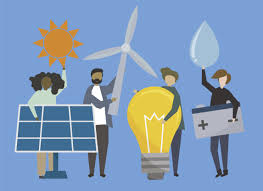Source:-technologynetworks.com
Climate change has emerged as the biggest threat to humanity, with devastating consequences such as extreme weather events, climate migration, and a sharp decline in biodiversity. While the brunt of climate action is shouldered by green parties and public activists like the young Greta Thunberg, in recent years many industries have stepped up innovation to try and do their bit.
The informatics industry in particular has been flexing its R&D muscle to propose bleeding-edge solutions. A recent paper published by a group of high-profile AI experts and IT professionals explores the potential that can be found “at the nexus of climate change and machine learning”.
Headed by David Rolnick, a Postdoctoral Research Fellow at the University of Pennsylvania, the paper puts a spotlight on “high-impact opportunities for real-world change” present in such ML fields as artificial intelligence, computer vision, unsupervised learning, and more.
Elsewhere in the industry, a number of digital giants and startups are already implementing their own twists on machine learning-driven solutions for climate change prevention and mitigation.
Let’s examine the three main benefits that ML and its derivatives can offer to the organizations fighting for the future of our planet.
Better predictions and estimates
AI and deep learning can be a good fit for data-rich climate science projects that typically provide datasets of necessary depth and variety, such as the research led by Google, the Mila institute, or the German Aerospace Center. The resulting models can, for example, evaluate energy consumption levels in buildings and electric vehicles more accurately, making it easier to discover trends and predict future consumption. Down the line, this leads to effective energy distribution and battery management — pivotal tasks for those trying to minimize their carbon footprint and make a switch to renewables.
Other examples of deep data analysis in climate change-related research include Facebook’s AI-based population density map for the majority of Africa and the application of DCNNs for detecting extreme weather events like tropical cyclones, atmospheric rivers and weather fronts.
Improved tracking and monitoring
Computer vision technologies such as object recognition are increasingly used to supercharge the analysis of visual climate data. Potential applications range from monitoring the scale of deforestation to generating the size and location data for solar panels to gathering information about climate adaptation policies across communities and nations.
With climate change affecting wildlife all around the planet, conservationists need reliable solutions for tracking populations of endangered species without disturbing them. Appsilon’s animal recognition project is addressing this challenge with an AI model capable of recognizing specific kinds of animals in images. The model is trained using the transfer learning technique, which ensures accuracy even with smaller datasets.
Optimized legacy systems and workflows
Artificial intelligence solutions have proven their effectiveness in streamlining complex business workflows and enhancing legacy systems. In the context of “clean tech”, AI is poised to have an impact on the design of environmentally-friendly buildings, sustainable supply chains, the efficiency of freight transportation, and more.
One of the most important sectors for this kind of innovation is agriculture. AI development enables so-called precision agriculture — solutions that enable waste and carbon emission reduction while improving crop yield.
So is AI going to save us all?
The
challenge of the climate crisis can also be viewed as an opportunity
for forward-thinking tech businesses to make their contribution.
Nevertheless, none of the solutions described above is a silver bullet.
It will take coordinated action and commitment from all of us, not just
the best brains of the IT sector, to tackle the problem.
At
the same time, machine learning and AI have demonstrated enormous
potential in reshaping our world — the ways we live, work, and consume.
In the coming years, these powerful tools will surely form a crucial
part in the global effort against catastrophic climate change.
